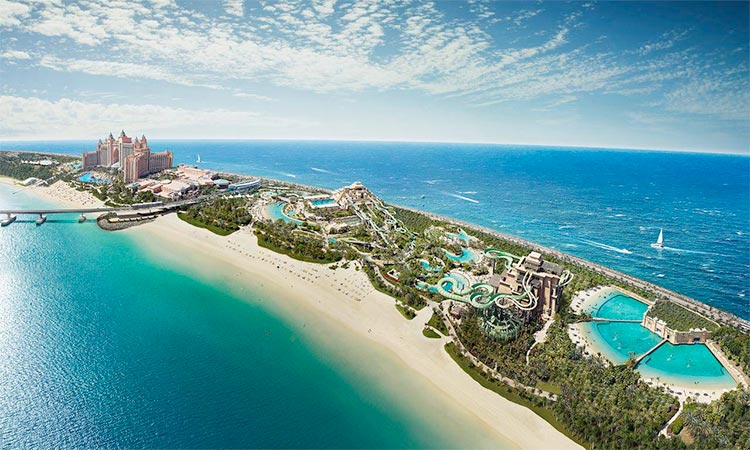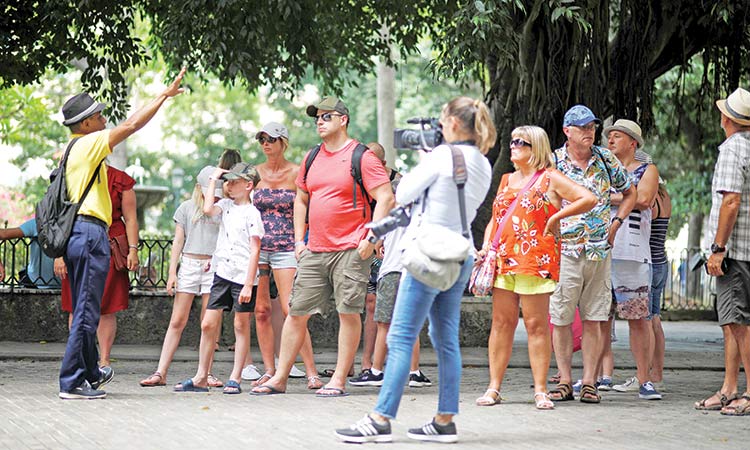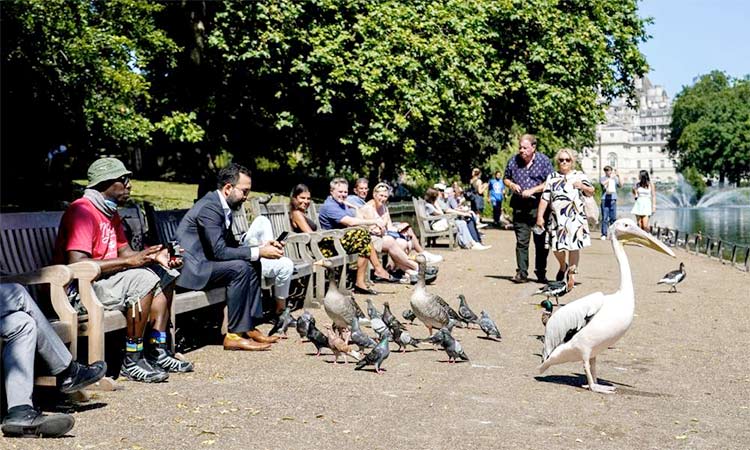Alarm signals from Canary Islands and Capri

People walk in the street on Capri Island, Italy. Reuters
Excess is the problem. And this has become visible in the case of tourism in two places. The first is the Canary Islands, off the coast of Spain; the other is the island of Capri, off Italy’s southern coast. Capri is more accurately off Naples, the southern island of the Italian peninsula. In 2023, 16 million had visited the islands, and more than half of them are British. An environmental organisation, SE12, in its report says, “The Canary Islands territory was more than overexploited. We had exceeded the carrying capacity of the territory by seven times, resulting in a scenario of systemic collapse due to the urban development structure.” In Capri, too it is the excess inflow of tourists that is at the root of crisis. The tourists outnumber the local residents in Capri. Every day, 16,000 tourists step off the boats from Naples while the number of local residents is 12,900. Most of the tourists are day-trippers, but many choose to spend the night. Most of the local houses are given on rent to the tourists and it creates problems of its own. According to Teoderico Boniello, head of the local consumers association, “Capri is becoming a dormitory for tourists. There are more people coming than we can cope with and families can’s set down roots because they can’t afford to stay.”
The dilemma is this. Both places are dependent on tourists for their livelihood. They need the tourists. But they cannot handle if there are too many tourists. If they expand the infrastructure, the physical limitations come into play. The place cannot bear too much infrastructure. Of course, the natural solution is to find more places, develop them so that tourists can be diverted. It is like a traffic problem in a city. A city cannot accommodate more than the maximum number of cars. Similarly, small places like islands, the Canary Islands and Capri for example, have inherent limitations. If people recognize these natural limitations, then it becomes easier to preserve the natural habitat, the ecological balance. In many ways, it is a lesson that natural surroundings are trying to convey to human beings. There is no way a market can expand infinitely. There are natural limits. The alarm signals of systemic collapse emerging from Canary Islands and from Capri should be taken note of. And its lessons applies in a wider context. Overcrowding of human habitations, islands or cities, has to be avoided to avert ecological disaster. And the same rule applies to market segments like tourism. An overcrowded market will collapse under its own weight. But there is the additional hazard in case of tourism. It will ruin the flora and fauna, and human habitations as well.
There are other places in Italy which are facing the problem of the tourism glut. Too many tourists, too little physical space. So, Italian cities like Venice and Florence are forced to adopt negative measures. Venice is imposing tourist fee for those entering Venice. Florence is imposing restrictions on letting out places for tourists. Mass tourism is seen as the new danger. Local residents in Canary Islands have come out on to the streets in protest against the overflow of tourists. This is not a problem of the Canary Islands, Capri, Venice and Florence alone. This is something that stares all European tourist spots. The ecological organization, Ben-Magec-Ecologists in Action of Canary Islands says, “Uncontrolled increase in the non-resident population of European origin, giving rise to completely overcrowded islands in which the generation of waste and the exploitation of resources cause an almost irreversible degradation of our natural ecosystems.”







